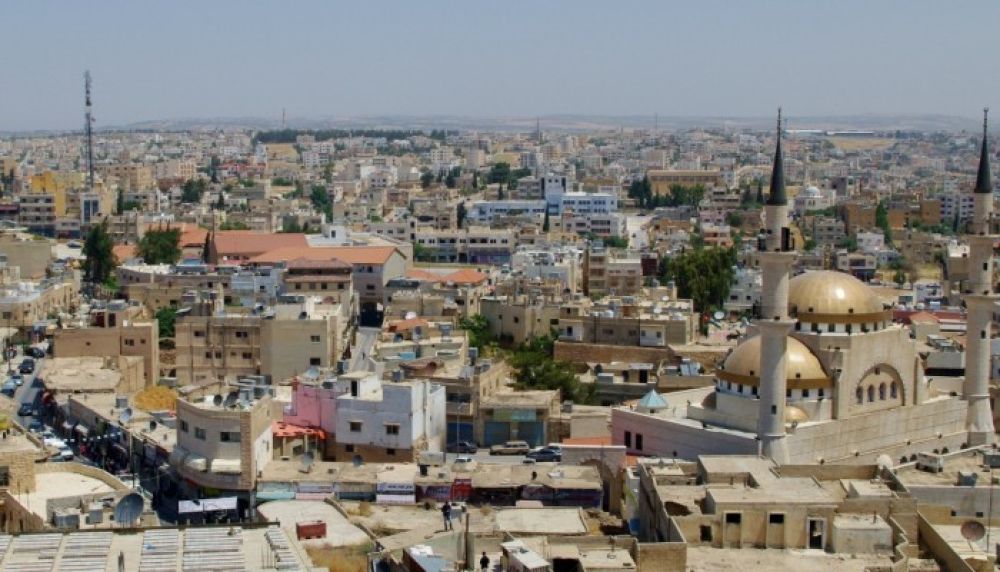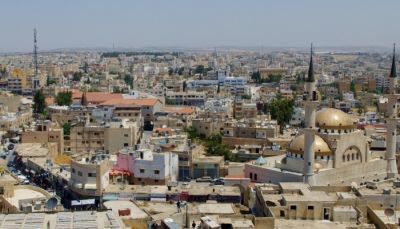

The Madaba Archaeological Park offers a fascinating glimpse into the region's rich history through its well-preserved mosaics and ruins. Visitors can explore impressive Byzantine and Umayyad mosaics, including the famous 6th-century map of the Holy Land. The park encompasses two parts: Park I and Park II, each housing intricate floor mosaics from churches and mansions, showcasing the elegance of the past civilizations. Discover remnants of the past as you stroll along the preserved arches and walls, reflecting on the skilled craftsmanship that has withstood the test of time. The Madaba Archaeological Park is not just a site of historic spectacle; it is an educational journey providing insights into the cultural and artistic achievements of the early inhabitants of Madaba. With each step on the ancient stones, visitors connect with the history that shaped the modern city of Madaba.
St. George's Church is an architectural and historical beacon in Madaba, best known for housing the oldest surviving original cartographic depiction of the Holy Land and Jerusalem. This 6th-century mosaic map serves not only as a work of art but also as an invaluable historical record that draws scholars and tourists alike. While the church itself is modest in size, the impact of the mosaic is monumental, having allowed historians to piece together ancient city locations that have since changed or disappeared. Visitors are not merely walking into a building; they witness a tangible connection to early Christianity. The church today still functions as an active place of worship, and its blend of religious services, historical content, and artistic beauty offers a unique experience. The energy is meditative, allowing visitors to contemplate the intricate details of the mosaic and the long-standing history it represents.
Just a short drive from Madaba, Mount Nebo is a revered holy site believed to be the burial place of Moses. According to the Bible, Moses saw the Promised Land from this peak before his death. The site has a long history as a pilgrimage spot and offers panoramic views stretching all the way to the Dead Sea, the Jordan River, Jericho, and on clear days, even Jerusalem. The Siyagha area, where Mount Neob stands tall, is home to ancient relics, including the Moses Memorial Church, with its stunning collection of Byzantine mosaics. Apart from the religious significance, the natural beauty surrounding the mountain adds a peaceful and contemplative air to your visit. Hiking trails and viewing platforms provide ample opportunities to take in the significant vista that left an impression on generations of believers and travelers. Exploring Mount Nebo is an emotionally moving and uplifting experience, combining spiritual reflection with breathtaking scenery.
Situated in several old Madaba residences, the Madaba Museum offers a cultural tour through the art and everyday life of the region. Exhibits showcase traditional costumes, jewelry, photos, and artifacts that give insight into the heritage of Madaba's people. Additionally, there are stunning mosaics spread throughout the museum's courtyards and galleries, some of which hail from the Byzantine and Umayyad periods. When wandering through the museum, you are transported back in time as you discover the traditions and craftsmanship that have been handed down through generations. The museum's mosaic collection complements the town's designation as the 'City of Mosaics,' adding context and depth to Madaba's historical narrative. A visit here is an enriching experience, bringing to life the stories that have shaped the community's cultural landscape.
Beyond its historical and religious significance, Madaba is also celebrated for its skilled local artisans. At the Madaba Handicraft Center, visitors get a firsthand look at the traditional crafts of the region, including rug making, weaving, and pottery. The center serves as both a workshop and a showroom, where beautiful hand-crafted items are on display and available for purchase. Here, you don't just watch the creation process but also learn the stories and techniques behind the crafts. This hands-on exploration of local culture supports the artisans and contributes to the preservation of Madaba's artistic heritage. Visitors can use this opportunity to pick up unique souvenirs and gifts, each carrying a piece of Jordan's history and craftsmanship. Engaging with the artisans and hearing their narratives adds a personal touch making for a memorable experience.
The intriguing Burnt Palace and Martyrs Church is an archaeological treasure within Madaba. This site reveals the remains of a mansion that experienced a destructive fire in antiquity, as the name suggests. What makes this location noteworthy are the well-preserved mosaics that have survived the blaze. Among the ruins, lies the Martyrs Church, which commemorates the Christians killed during the Persian invasion. The narratives depicted in the mosaic artwork present stories of religious significance and day-to-day life. The site encapsulates a moment in time, combining the grandeur and the devastations of ancient Madaba. Touring the Burnt Palace and Martyrs Church is an educational outcome, allowing discernment of the resilience of culture and art amidst historical turmoil. The mosaics serve as a testament to the enduring human spirit and the importance of remembrance in our shared history.
The Madaba Visitors Center serves as the perfect starting point for any traveler looking to explore the city's historical and archaeological wonders. Here, one can find interactive exhibits and multimedia displays that provide context and enrich your understanding of Madaba's significance. The center offers information on the city's mosaic art, religious heritage, and the archaeological sites that can be visited throughout the area. Knowledgeable staff are on hand to answer questions, provide maps, and offer advice on the best routes to take to maximize your Madaba experience. The Visitors Center also organizes walking tours, which is an excellent way for visitors to engage with the city's historic core in a structured and informative way. With its central location, the center is a hub of information, ensuring that travelers leave well-prepared to discover the beauty and history of Madaba.
The Apostles' Church, situated in the heart of Madaba, stands as a monument to the city's Christian heritage. This church is particularly famous for its impressive 6th-century mosaic floor, which, although damaged, still shows a clear depiction of Thalassa, the personification of the sea, being surrounded by a variety of sea creatures. The mosaic is an exemplar of ancient artistry and speaks volumes about the beliefs and ideologies of the early Christian era. As visitors step across this mosaic, they walk over the same floors that ancient worshippers once did, providing a profound sense of connection to history. The church also contains other mosaics that illustrate flora and fauna, presenting a beautiful tapestry of ancient iconography. Visiting the Apostles' Church is not just about admiring old mosaics; it's about experiencing a piece of the area's spiritual and artistic legacy.
The Madaba Institute for Mosaic Art and Restoration is not only an educational center but also a living workshop where the ancient craft of mosaic-making is preserved. This institute is a cornerstone of Madaba’s cultural identity, offering hands-on experiences where visitors can observe students and masters at work. It is a place where the region's mosaic heritage is kept alive through meticulous restoration of antique pieces as well as the creation of new works. The institute has played a pivotal role in preserving Jordan's mosaic treasures and promoting the understanding of this intricate art form. Visitors can take short courses or workshops, providing them with the unique opportunity to learn about mosaic art from the experts themselves. Engaging with the institute staff allows for a deeper appreciation of the skill and patience required to maintain this age-old tradition.
A visit to Madaba is incomplete without experiencing the vibrant Madaba Souk. This market area buzzes with local life, offering a chance for visitors to experience daily culture in Jordan. Stalls and shops line the streets, selling everything from fresh produce and spices to textiles and traditional Jordanian handicrafts. The souk is an ideal place to sample local cuisine, with small eateries and cafes providing delicious Middle Eastern fare. The colors, sounds, and scents are a feast for the senses, and bargaining with shopkeepers is part of the fun. Walking through the Madaba Souk is an adventure where tourists can find unique trinkets and gifts while soaking in the lively atmosphere. The souk also provides an opportunity to interact with locals and gain insight into the customs and rhythms of life in Madaba.
